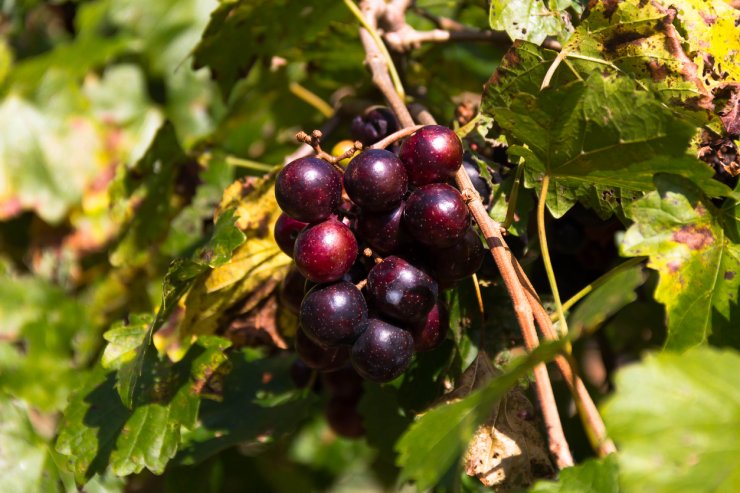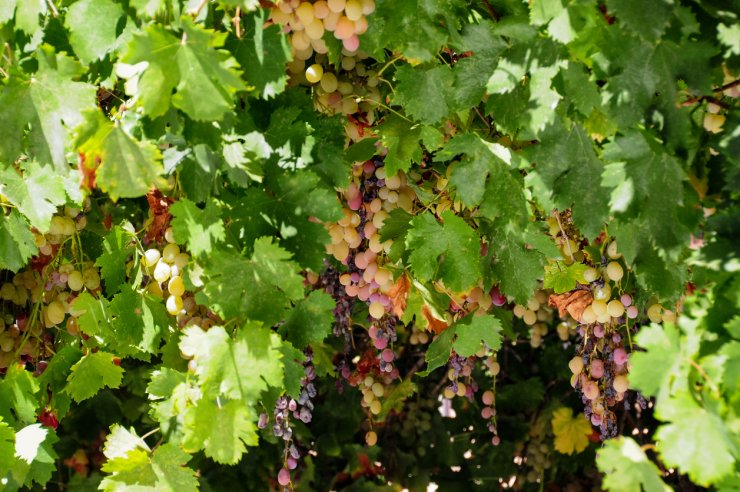
Muscadine grapes on the vine.
There are four types of grapes for most home gardeners to choose from. The first is American grapes, Vitis labrusca, which are fairly easy to grow and are the most cold-hardy. Then there are European grapes, Vitis vinifera, mostly for wine and heavily seeded. These are tricky for the home gardener, being more prone to diseases and pests, and are best suited to Mediterranean-type zones.
Then there are French-American hybrids, which are both cold-hardy and disease-resistant, but not as flavorful as European grapes. A fourth type of grape grown in the U.S. is the Muscadine (Vitis rotundifolia), which is native to the southern part of the country and is best suited for processed uses.
The most popular American grape is the Thompson seedless, a green grape. Then there’s the Concord grape, a seeded variety most often used for juice, jam, and jelly. It’s suited to Midwestern climates with good pest resistance and cold hardiness, and it’s ideal for a beginning gardener.
For the gardener of limited grape experience, French-American hybrid grapes are also a good choice, and they have good qualities for winemaking.

Grapevines.
Of course, there are seeded and seedless grapes, too, across all types of grapes. Most people prefer seedless for fresh eating. Consider the purpose of the grape you’ll be choosing: Grapes can be suited to different end uses. Table grapes have thin skins, are ideal for snacking, and are best consumed when fresh. Juice grapes have thicker skin that peels off very easily. They’re most commonly used for jelly or jam. Wine grapes are extremely sweet (sweeter than table grapes), have a thick skin, and contain an abundance of seeds.
Above all, check that the variety you’re considering is hardy in your zone. Warm regions with hot, dry summer days and cool, humid nights are ideal for wine grapes. In cooler regions, you can plant a variety of table grape that’s cold-hardy. And if you’re unsure about whether you’re on the cold side for grapes, try planting a vine against a southern-facing wall or hillside.
Finally, choose a self-fertile variety (most vines are), or buy at least one more plant for pollination.
Have you grown different varieties of grapes? For what purpose do you grow grapes—for winemaking, juice or jam, for snacking, or for some other purpose? Please let us know in the comments.


 Previous
Previous

